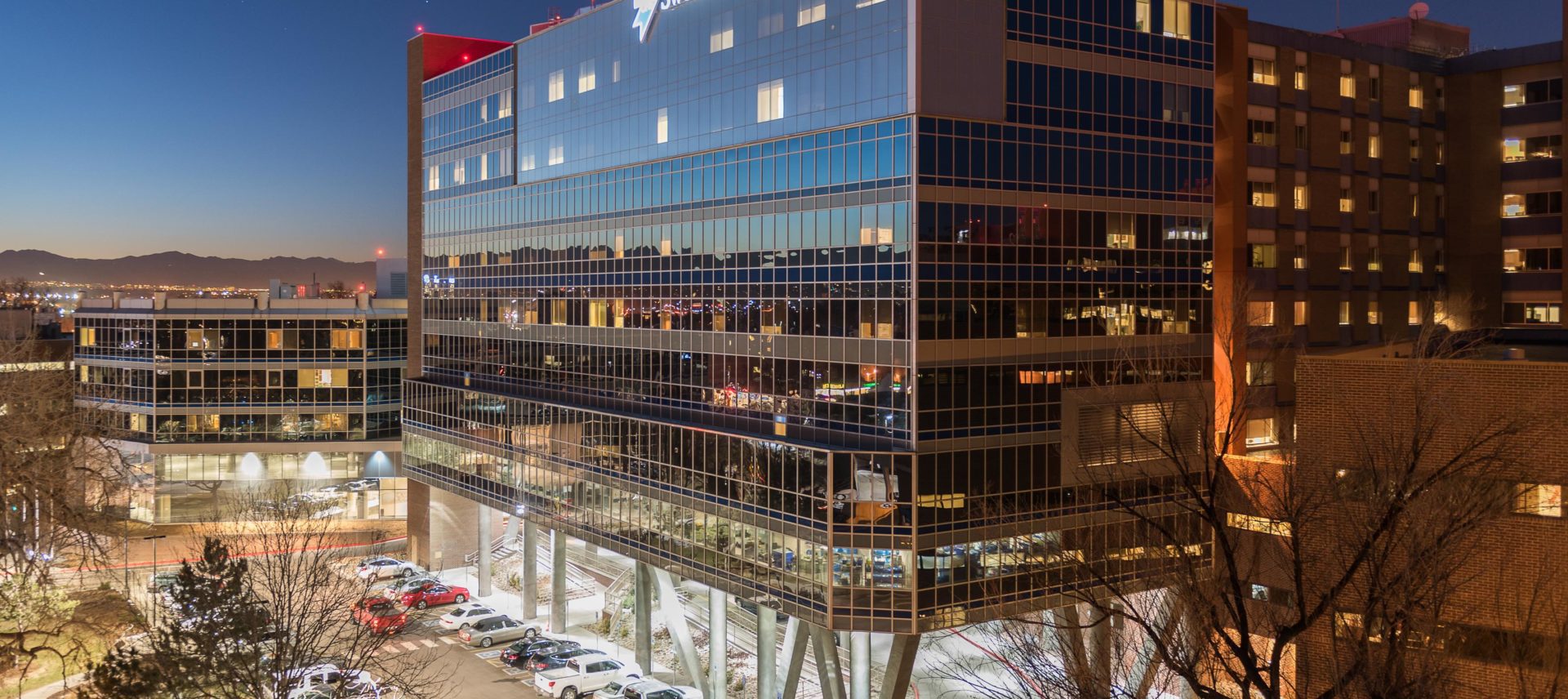News & Insights
Structural strategies for effective hospital retrofits
Discover the essential structural strategies for effective hospital retrofits. This article covers key considerations from early planning and code compliance to leveraging modern materials and technology.

Hospitals can’t afford to close their doors during construction. When retrofits are needed, the work must proceed alongside daily operations, minimizing disruptions to patient care and to the hospital system’s revenue stream. This necessity makes structural upgrades uniquely challenging in hospital environments.
This article highlights five essential structural strategies for effective hospital retrofits, focusing on adaptable, safe, and effective structures—all while ensuring the facility remains fully operational.
Avoid structural pitfalls through early involvement
Involving a structural engineer early in a hospital renovation early can prevent costly oversights, particularly in these key areas:
- Code compliance. The extent of a renovation often dictates the level of code compliance required. While minor updates might only need localized changes, more extensive renovations could mandate bringing the entire facility up to current standards. Structural engineers can collaborate with design teams to ensure compliance is seamlessly integrated into the project plan.
- Accommodating new elements. Renovations frequently involve adding new equipment such as boom supports, surgical arms, or large imaging equipment, that has different structural demands than the existing infrastructure. Early involvement of a structural engineer allows for a thorough assessment of the building’s capacity, enabling the design team to budget for necessary reinforcements or modifications from the outset.
- Critical adjacencies. Renovations can impact adjacent spaces, potentially disrupting circulation and egress, and operations in critical areas like operating rooms or imaging centers. Structural engineers can analyze these impacts and recommend design strategies to minimize vibrations and other disturbances, helping to maintain the facility’s functionality.
- Creative placemaking. Structural enhancements in high-impact areas, such as lobbies, can contribute to a welcoming environment while also improving wayfinding for patients and visitors. By working closely with the architectural team, structural engineers can provide cost-effective options for elements such as artwork, sculptures, and wall- or ceiling-mounted signage to help develop innovative designs that elevate the space beyond the conventional.
Manage unknowns: Navigating incomplete or inaccurate drawings
Older hospital buildings often come with the challenge of incomplete or outdated drawings, which can introduce unforeseen complications during retrofits. To mitigate these risks, design teams can utilize advanced technologies like 3D laser scanning. This method allows engineers and architects to create precise models of existing structures, fostering better collaboration across disciplines, and ensuring renovations integrate effectively with the original design.
For example, scanning techniques that detect embedded rebar within concrete are crucial for evaluating the feasibility of proposed modifications. By employing these proactive measures, design teams can anticipate potential issues, minimizing unexpected costs and reducing the need for extensive contingency plans by gaining a clearer understanding of the structural complexities involved.
Additionally, hospital design teams can adopt advanced non-destructive testing methods, such as the Sensequake system, which uses portable sensors to analyze a building’s dynamic properties. This approach provides engineers with valuable insights into the dynamic characteristics of older structures, enabling more informed decisions about necessary reinforcements.
By assembling a team with experience in overcoming these challenges, hospital design teams can effectively manage potential issues, leading to sustainable and successful outcomes.
Future-proof through flexible design
A common request from healthcare facility clients is to ensure flexibility and avoid creating future obstacles during renovations. Structural engineers aim to minimize the impact on floor layouts, preserving open, adaptable spaces that meet current and future needs.
Columns, braced frames, and shear walls can disrupt the flow of patients and staff, particularly in critical areas where efficiency is vital. To avoid this, engineers collaborate with the design team to find solutions that support operational needs without limiting flexibility. This might involve using long-span systems or strategically placing load-bearing elements to maintain open spaces. One example of the structural system that offers floor plan flexibility is a Side Plate Moment frame that also provides a significant cost savings solution in multistory buildings.
Structural engineers must consider how the hospital might evolve, designing spaces that can easily accommodate new equipment, reconfigured layouts, or even different medical functions. This forward-thinking approach not only protects against obsolescence but also enhances the facility’s ability to adapt to unforeseen changes, making it more resilient and sustainable in the long term.
By focusing on flexibility, structural engineers help create spaces that support the hospital’s mission now and in the future.
Leverage modern materials (where it makes sense)
The latest advancements in construction materials, such as fiber-reinforced polymers, cold-formed steel (CFS), high strength steels expand options for hospital retrofits. The lightweight yet strong nature of these materials allows for easier installation and reduced load on existing structures, which is particularly beneficial in older facilities. Additionally, these materials contribute to improved long-term durability, enhancing the facility’s resilience to wear and tear while reducing maintenance needs.
However, cost remains a critical consideration in material selection. Hospital renovations often operate within tight budgets, requiring careful evaluation of material choices to balance performance with the hospital system’s sustainability goals and financial constraints. Involving the structural engineer early in the design process can more effectively identify and incorporate these modern materials.
Drive efficiency and precision: the impact of BIM and prefabrication
Building Information Modeling (BIM) and prefabrication techniques have revolutionized how hospital retrofits are planned and executed, allowing for seamless integration of structural and MEP (mechanical, electrical, and plumbing) systems. In today’s projects, structural engineers are no longer just designing the building; they are integral team members who work closely with MEP teams to ensure that every support, opening, and penetration is precisely coordinated.
With BIM, all elements—whether it’s ductwork, fire suppression systems, or electrical conduits—are meticulously mapped out in the digital world before construction begins. This pre-coordination eliminates the need for on-site improvisation, reducing errors and speeding up the construction process. By addressing potential issues in the design phase, such as ensuring that a door frame isn’t compromised by an unexpected plumbing line, BIM helps avoid costly delays and rework.
For BIM coordination to be successful, structural BIM models must meet the requirements of LOD 350 capturing all miscellaneous framing elements that could conflict with various mechanical, electrical, and plumbing systems.
Prefabrication, particularly with CFS, further enhances efficiency. In hospital projects, prefabricated components like headwalls are essential for streamlining the installation of medical gases, electrical outlets, and other critical infrastructure. These elements are precisely positioned to meet the exacting standards of medical staff, ensuring that everything is replicated room-to-room and is within easy reach and with effective operation almost by muscle memory during emergencies. Prefabricated elements also enhance construction quality and efficiency, reduce on-site labor costs, and allow renovated spaces to open more quickly.
By coordinating these efforts through BIM and leveraging prefabrication, hospital retrofits can be completed more quickly and with greater precision, allowing facilities to return to full operation sooner and with fewer disruptions.
How Salas O’Brien can help
With extensive experience in hospital retrofits across North America, Salas O’Brien’s structural engineering teams understand the unique challenges of working in active healthcare environments. We partner with your team from the earliest planning stages through to the completion of construction, ensuring that your project is executed efficiently, safely, and with minimal disruption to patient care.
If you’re considering structural solutions for your next hospital project, connect with one of our contributors below to discuss how we can help bring your vision to life.
For media inquiries on this article, reach out to Stacy Lake, Director of Corporate Communications

David McMillan, SE
David McMillan is a multi-state licensed structural engineer with over 30 years’ experience in the design and construction industries. His portfolio includes residential, commercial, retail, healthcare, technology, life sciences/pharmaceutical, data center projects, and seismic retrofits. David’s healthcare experience comes primarily from comes primarily from working with OSHPD/HCAI, the agency overseeing hospital projects in California. He serves as a Principal at Salas O’Brien. Contact him at [email protected]

Ryan Nelson, PE
Ryan Nelson has provided an array of structural engineering design services throughout his career including new building and renovation design and cold-formed steel (CFS) engineering design. He specializes in engineering for nonbuilding structures including hospital air handler units, cooling towers, ceiling-mounted X-ray equipment, operating booms and light supports CATH lab equipment booms and supports, MRI and CT room upgrades, prefabricated interior wall framing, and MEP supports. Ryan serves as a Vice President at Salas O’Brien. Contact him at [email protected]

Jiri Vlk, PE
Jiri Vlk has more than 30 years of structural engineering experience, including almost 20 years with Salas O’Brien. He is responsible for project management, structural design, and project coordination for a variety of healthcare building types spanning hospitals, MOBs, and community clinics for numerous in- and outpatient healthcare services. Jiri serves as a Vice President at Salas O’Brien. Contact him at [email protected]